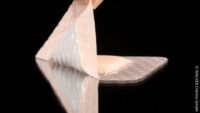
Targeted release of active ingredients through the skin
28.10.2025
New possibilities for silicone adhesive materials
Jacob Müller
Smartlets: Microrobots move and communicate in Water
10.10.2025
Chemnitz University smartlets show autonomous movement and communication in water, with potential uses in medicine and environmental monitoring.
Textiles with built-in infection protection
10.10.2025
Hospital germs are a growing problem. Find out how innovative textiles with AGXX can actively prevent infections in the future.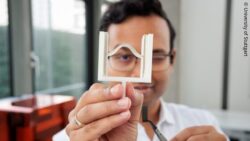
University of Stuttgart
Stuttgart group studies soft robotics materials
06.10.2025
At the University of Stuttgart, researchers explore viscoelastic polymers for soft robots, with future use in medicine, industry, and safety equipment.
Makusu Tsutsui
Nanocoil device for portable DNA sequencing
05.09.2025
Osaka researchers present a nanodevice that unzips DNA with minimal energy, supporting accurate sequencing and personalized medicine.
Kiel University
3D printing advances inhaler drug delivery
01.09.2025
Kiel University develops 3D-printed carrier particles that enhance drug release in dry powder inhalers.
KAIST (Korea Advanced Institute of Science and Technology)
KAIST creates 3D brain research platform
08.08.2025
KAIST developed a precise 3D brain-like platform for studying neuronal networks and testing treatments for neurological diseases.
Universitat Politècnica de València
HYDROHEAL project advances bone regeneration
07.08.2025
HYDROHEAL develops biomaterials using hydrogels and AI to improve bone fracture treatments and speed up patient recovery.
FBH/P. Immerz
Far-UVC LEDs fight resistant hospital germs
06.08.2025
Ferdinand-Braun-Institut develops far-UVC LEDs to kill multidrug-resistant germs, enabling targeted medical disinfection.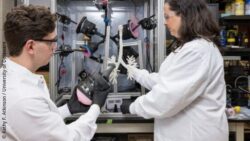
Kathy F. Atkinson / University of Delaware
3D lung model supports aerosol delivery
18.07.2025
A new breathing lung model helps researchers evaluate how inhaled medicines behave under real-world conditions, aiding respiratory drug development.
2025 Ella Maru Studio/BIOS EPFL CC BY SA 4.0
Quantum biosensor detects biomolecules without light source
08.07.2025
EPFL has developed a chip-sized biosensor that uses quantum tunneling to emit and detect light - for ultra-sensitive molecular diagnostics.
DITF
Elastic inks for durable medical smart textiles
07.07.2025
DITF researchers develop conductive inks that retain performance under stress.
Implants: Successful 3D bioprinting in space
03.07.2025
A bioprinter printed nerve implants on the ISS for the first time - also for better healing on Earth.
Fraunhofer IPMS
Energy-efficient portable pH monitoring
11.06.2025
Fraunhofer IPMS developed compact ISFET control electronics, ideal for water analysis and medical fluid diagnostics.
Ruyu Ma - Helmholtz Munich
QIScope reveals cell activity in low light
10.06.2025
The QIScope microscope captures bioluminescent signals in living cells with high sensitivity and resolution, ideal for long-term biological imaging.
National University of Singapore
Microneedles improve wound healing
09.05.2025
Microneedle technologies developed at NUS speed up diabetic wound healing and reduce inflammation in studies.
NMI
Bioink with fibers boosts nutrient flow in bioprinting
08.05.2025
A new fiber-based bioink improves nutrient transport and structural integrity in 3D-printed tissue models for pharma and medical use.
Sebastian Lassak, Fraunhofer IPMS
Edge AI sensors for health and environment
03.05.2025
InSeKT develops compact edge AI sensors for real-time applications in medical technology, industrial electronics, and environmental monitoring.
Mikael Nyberg
Method for developing precise sensors
07.04.2025
Researchers introduced a new method for creating highly sensitive sensors that could play a crucial role in healthcare monitoring.
Fraunhofer IAF
New virtual application lab for quantum sensing
07.04.2025
Fraunhofer IAF has developed a virtual application lab to promote the use of quantum sensors in industry, allowing interactively measurements.
Empa
Soft muscles from the printer
04.04.2025
Researchers developed soft silicone actuators using 3D printing. These artificial muscles could one day support movement in humans.
Daniel Nilsson
Ultra-sensitive detection method for bacterial spores
10.03.2025
Researchers at Umeå University have developed a highly sensitive detection method that could improve food safety and contamination control.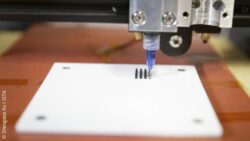
Shengduo Xu / ISTA
Thermoelectric materials from the 3D printer
07.03.2025
Thermoelectric materials play a crucial role in efficient temperature regulation in electronics and medical applications.
Fraunhofer IMWS
Microlenses: new laser process
06.03.2025
A process called laser swelling, enables the cost-effective and customized production of microlenses for eyeglasses.
Additive manufacturing trends
10.02.2025
Additive manufacturing enables the precise production of highly complex and customized products and offers valuable advantages.
Fraunhofer IPMS
High-precision imaging and laser
10.02.2025
A recent development from the the Fraunhofer IPMS: the first hybrid 2D vector scanner modules with electromagnetic drive.
Janina Datz (LNM, TUM)
Open-source software 4C for medical simulations
07.02.2025
Researchers has released the 4C (Comprehensive Computational Community Code) as open-source software.
Thor BalkhedRestriction
Connection between individual cells and organic electrodes
07.02.2025
A research team has successfully established a close connection between individual cells and organic electrodes.
AI tool for faster detection of placental health issues
10.01.2025
A new developed AI-tool could improve neonatal and maternal care by analyzing placentas immediately after birth.
Fraunhofer ISC
Bioreactor enhances long-term culturing of human stem cells
09.01.2025
Fraunhofer Translational Center have developed a bioreactor for long-term culturing of stem cells.
EMPA
Microceramic stars that hit the skin
11.12.2024
Nanoceramic microstars from Empa enable the transport of active ingredients into the skin via micro-bursts.
University of Nottingham
Materials for personalized regenerative implants
11.12.2024
Researchers have developed a new blood-derived material capable of repairing bones, the "biocooperative" material.UChicago Pritzker School of Molecular Engineering / John Zich
Hydrogel semiconductor bridges bioelectronics and living tissue
27.11.2024
Researchers have developed a unique hydrogel semiconductor with properties ideal for medical applications.
Fraunhofer IFAM
PFAS substitutes as solutions for safe surfaces
08.11.2024
The IFAM has developed alternatives to perfluorinated and polyfluorinated alkyl substances (PFAS) that can also be used in medical technology.
The next generation of visual implants
30.10.2024
With the miniaturization of technology and improved data transmission and evaluation, visual implants are coming into focus.
Julia Siekmann, Kiel University
New production method for an antiviral coating
07.10.2024
Researchers have investigated and compared six biomedical coating materials to understand their interactions with cells, skin and viruses.
Fraunhofer IPMS, Sebastian Lassak
OLED-on-CMOS technology: New approach for light sources
04.10.2024
Researchers are developing OLED-on-CMOS-based optical stimulators for future cochlear implants as part of the “NeurOpto” project.
Fraunhofer IAP / Jadwiga Galties
3D bioprinting: Personalized implants for cartilage therapy
02.10.2024
Researchers are developing 3D printing inks with the body's own cartilage cells for personalized cartilage implants.
Yasar TB et al. Nature Communications 2024
Gold electrodes measure brain activity precisely and gently
16.09.2024
New development from ETH Zurich: electrodes made of gold record brain activity precisely and gently.
EPFL
An entire brain-machine interface on a single chip
10.09.2024
A new miniaturized brain-machine interface enables direct brain-to-text communication on extremely small silicon chips.
COMPAMED
Implants: out-of-body communication
09.09.2024
A new Bluetooth technology makes it possible for implants in the abdomen to connect to smartphones.
Messe Düsseldorf / Andreas Wiese
CSF: Medical manufacturing to circular economy
07.08.2024
In 2024, the COMPAMED Suppliers Forum will once again offer a special opportunity to present your own expertise.
Empa
Smart fibers for precise drug delivery
22.07.2024
Empa researchers have developed a promising solution for local drug delivery over a longer period of time.
Pexels/Alexey Larionov
Innovation over production
12.07.2024
In order to remain competitive, the EU has created instruments to promote innovative ideas and modern technologies.
Fraunhofer IBMT
Innovative modular principle for ultrasonic sensors
10.07.2024
SonoOne" ultrasonic sensor system opens up innovative possibilities for a wide range of applications thanks to its modular system.
B. Bobusch/FDX Fluid Dynamix GmbH
FDmiX platform: production of high-quality nanoparticles
02.07.2024
Fraunhofer IPK and FDX Fluid Dynamix have reached a milestone in nanoparticle production with the development of the FDmix platform.
Switzerland Innovation Park Ost AG/Karin Tanner
Innovation Health Hub opened
17.06.2024
The opening of the Swiss Health Innovation Hub laid an important foundation stone for future innovations.
Karin Kaiser/MHH
Latest generation of self-dissolving stents conquers hearts
11.06.2024
Dissolving stent offers new hope for narrowed arteries - 2nd-ever implant at Hannover Medical School, ideal for younger patients.
Envato/YouraPechkin
Sensors – hidden heroes?
10.06.2024
They monitor, transmit and control – sensors in medical technology. Hardly any device can do without them.
The versatile world of 3D printing
10.06.2024
In our video, we shed light on the possibilities of current printer models and their medical applications.
Fraunhofer IPM
Sensor takes breathing gas measurement to a new level
10.06.2024
Fraunhofer IPM researchers developed a sensor that measures oxygen levels directly in breath, delivering precise and continuous readings.
Envato/MegiasD
AI: unstoppable resource drain?
27.05.2024
As great as the possibilities offered by AI are, their use is linked to prerequisites that many people are not aware of.
Qant
Sensor technology for prosthesis control
14.05.2024
Q.ANT’s innovative magnetic field sensor enables new possibilities in prosthesis control and medical sensor technology and beyond.
Envato/Tatiana_Mara
3D: Laser Powder Bed Fusion
08.05.2024
New 3D printing technology: highly complex components made of metallic materials with Laser Powder Bed Fusion (LPBF).
Ottobock
Ottobock presents GreenLine: Sustainable materials
08.05.2024
Ottobock’s new GreenLine merges sustainability with function: eco-friendly prosthetics and orthotics for modern medical technology.
INP
Plasma printing technology enables surface modification
06.05.2024
Researchers at INP have developed plasma printing technology that allows precise surface modification on an extremely small scale.
Empa
Cellulose aerogel combines sustainability with high-tech
24.04.2024
Empa researchers have developed a 3D-printable, biodegradable cellulose aerogel that combines pioneering properties.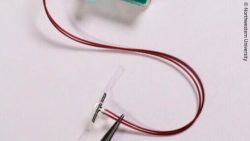
Northwestern University
New technology for bladder dysfunction
15.04.2024
Northwestern researchers developed a flexible, battery-free implant that tracks bladder fullness in real time and sends data to a smartphone app.
PolyPrint: 3D printing for medicines
12.04.2024
Better therapies, fewer side effects - 3D printing for personalized medicines.
ninelutsk / Envato
Biomimetic adhesive for tissue and bone
02.04.2024
The printable dopamine-based tissue adhesive can even be printed on curved, uneven surfaces.
PHOTO COURTESY OF YONGLONG XIE/RICE UNIVERSITY
Rice physicist receives NSF CAREER award
21.03.2024
Yonglong Xie wins $888,555 grant NSF CAREER Award to advance magnon research, paving the way for future quantum tech and sensors.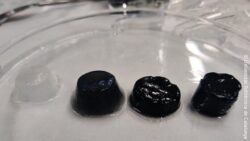
Universitat Politècnica de Catalunya
New hydrogel for seawater desalination
18.03.2024
UPC develops thermosensitive hydrogel for solar-powered desalination and smart biomedical adhesives in diagnostics and semi-invasive therapy.
Excor Active
Software for medical technology
11.03.2024
Many medical devices utilize software designed to meet the special requirements of current regulation.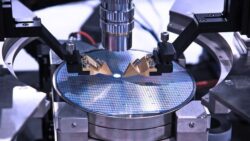
Advancements in microchip manufacturing
29.02.2024
Plasma scientists at the U.S. Department of Energy’s Princeton Plasma Physics Laboratory (PPPL) have made advancements in microchip manufacturing.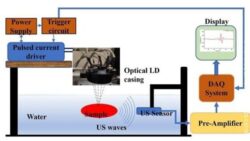
Khan et al., doi 10.1117/1.JBO.29.1.017002
Photoacoustic sensing instrument for tissue diagniostics
15.02.2024
Researchers developed a compact, low-cost photoacoustic tool that enables fast, accurate breast tissue diagnosis and better patient care.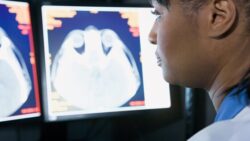
envato
New technology for brain cancer visualization
31.01.2024
Researchers developed dExPath, a microscopy method that reveals hidden brain tissue details to improve brain cancer diagnosis.
Fraunhofer IESE
Production of mRNA therapeutics
31.01.2024
RNAuto wants to reduce prices for some particularly expensive drugs by automating production.
ninelutsk / Envato
Small technology for powerful hearing
14.12.2023
The smallest components are needed for hearing aids. We take a look at the microtechnology in devices.
ionadidishvili
Artificial intelligence makes gripping more intuitive
14.12.2023
128 sensors and AI help decode forearm muscle patterns, enabling more natural and intuitive control of artificial limbs.
Washington State University
Conductive, cotton-based fiber for smart textiles
12.12.2023
WSU develops cotton-like fiber with polyaniline conductivity: flexible, conductive, and promising for wearable e-textiles.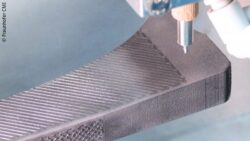
Fraunhofer CMI
Inspired by mussels: printable adhesives for tissues and bones
07.12.2023
Fraunhofer teams develop tissue adhesive to prevent early prosthesis replacement, enhancing long-term implant stability.
TU Bergakademie Freiberg / Andreas Hiekel
Basis for innovative PFAS filter made of clay
06.12.2023
PFAS filters use costly activated carbon - researchers seek cheaper alternatives to tackle these persistent "eternal toxins."
coffeekai
Recycling model for the plastics industry
30.11.2023
Profs Kümmerer and Endres aim to create a sustainable recycling model for the plastics industry at Leuphana and Leibniz Universities.
Tomáš Belloň / IOCB Prague
Computer model of the ear may help to improve cochlear implants
28.11.2023
Prof. Jungwirth’s team and MED-EL create full computer model of the ear- simulating mammalian hearing from outer ear to auditory nerve.
bellaSeno
3D printing: composite material for bone healing
28.11.2023
After a bone fracture, some patients experience healing disorders. To enable effective treatment in these cases, the Fraunhofer Institute IFAM (Germany) is researching a new composite material for use in the operating theater as part of the SCABAEGO joint project.
JoPanwatD
Pancreas: nanoparticles for optimized cancer therapy
22.11.2023
Researchers developed a targeted pancreatic cancer therapy with fewer side effects, now headed for clinical use.
FemtoGLASS for glass and sapphire
13.11.2023
WOP/Workshop of Photonics shows FemtoGLASS, a new device for laser cutting technology, in the video.
RUB, Marquard
Measuring instruments detect new materials
31.10.2023
New algorithm speeds up material analysis, integrating with existing tools to cut days-long processes to minutes.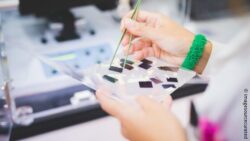
imagesourcecurated
Manufacturing tailor-made semiconductor thin films
25.10.2023
Led by Leibniz IPHT, researchers developed a new method to deposit thin organic semiconductor films automatically with high molecular precision.
atercorv
The new Center for Bionic Intelligence Tübingen Stuttgart
18.10.2023
Researchers are developing intelligent bionic systems to improve understanding and treatment of central nervous system diseases.
Nick Fewings / Unsplash
Plastic production via advanced recycling lowers GHG emissions
17.10.2023
Advanced recycling of post-use plastic cuts GHG emissions and boosts U.S. recycling, says DOE Argonne Lab study.
Fraunhofer IBMT
Bidirectional control of prosthetic hands
12.10.2023
Researchers at Fraunhofer are working as part of an EU research project to improve control of prosthetic hands down to individual fingers.
Fraunhofer IDMT/Anika Bödecker
Vital data: the whole body on the radar
04.10.2023
Fraunhofer IDMT researchers developed a radar-based method to collect and analyze vital signs, offering a new approach to non-contact health monitoring.
Kate Myers/Penn State
Wearable sensor for continuous analysis of sweat
03.10.2023
A new wearable patch enables continuous sweat monitoring, offering glucose tracking where earlier sensors lacked durability and precision.
Fraunhofer ILT, Aachen
Integrated sensor tech: next stage in additive manufacturing
28.09.2023
Fraunhofer ILT developed a sensor system via additive manufacturing to meet Industry 4.0 needs for precise machine condition monitoring.
Christian Wißler/UBT
EXIST funding for bacterial magnetic nanoparticles
27.09.2023
BioMagnetix develops bacterial magnetic nanoparticles for imaging and cancer therapy, aiming for high quality and continuous improvement.
Fraunhofer IPT
Automated series production of optics
21.09.2023
Fraunhofer IPT in Aachen has added a new system for automated molding of high-precision optical glass components to its machinery.
TUD
Pioneering approaches for the detection of viral antigens
20.09.2023
Scientists made major progress in developing innovative materials-based solutions for detecting viral pathogens in two recent studies.
Faraz Faruqi and Stefanie Mueller
AI-driven tool to personalize 3D-printable models
19.09.2023
MIT’s Style2Fab lets users personalize 3D models with text prompts, adding custom designs without affecting object functionality.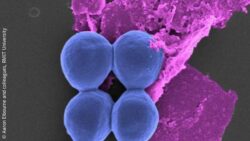
Aaron Elbourne and colleagues, RMIT University
Ultrathin nanotech promises to help tackle antibiotic resistance
14.09.2023
Nano-thin material kills superbugs - future use in wound dressings and implants to fight infections.
TU Dresden/IHM
Project for microelectronics resarch in Germany launched
13.09.2023
BMBF-funded ForLab project links 14 German universities in microelectronics and enables new research through advanced lab facilities.
Julia Siekmann, Uni Kiel
Muscles for soft robots inspired by nature
07.09.2023
Kiel University develops muscle-like hydrogel that expands and contracts quickly - ideal for soft robotics applications.
Empa
Sustainability: wood instead of plastic?
06.09.2023
Could manufacturers even do without plastics to become more sustainable?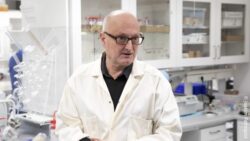
Joakim Palmqvist
Biosensors to detect tumors, viruses and bacterial diseases
05.09.2023
Linnaeus University invests SEK 35M in biosensor tech to enable faster, affordable diagnoses and potential at-home tests for serious diseases.
RUB
Hardware Trojans in microchips
29.08.2023
While we are sensitized to software Trojans, hardly anyone knows that Trojans can also hide in hardware.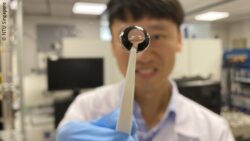
NTU Singapore
Micrometres-thin battery could power smart contact lenses
24.08.2023
NTU Singapore developed a flexible, cornea-thin battery that charges in saline and may one day power smart contact lenses.
Fraunhofer IZM
Future chips: using magnetic effects in electrons for a hundredfold reduction in power consumption
23.08.2023
SPIDER project: Using spinwave technology, EU consortium led by Fraunhofer IZM aims to cut computer chip power consumption by 100x. Magnon-based approach promises energy-efficient computing. Project runs till May 2026 with €3M funding.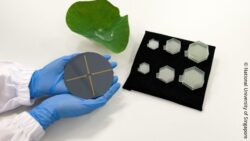
National University of Singapore
Nature-inspired pressure sensing technology aims to transform healthcare and surgical robots
22.08.2023
NUS researchers have developed 'eAir', an innovative pressure sensor inspired by the lotus leaf effect. This sensor could revolutionize minimally invasive surgeries by providing tactile feedback to surgeons and improve patient experiences in monitoring intracranial pressure. Its unique design enhances precision and reliability, potentially transforming various medical applications.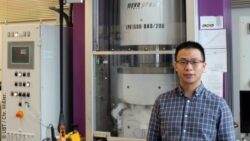
UBT / Chr. Wißler.
New glass with supreme toughness
17.08.2023
Researchers at the University of Bayreuth, together with partners in China and the USA, have produced an oxide glass with unprecedented toughness.
Jean Lachat
Smallest known way to guide light invented
15.08.2023
Scientists at the University of Chicago found a glass crystal just a few atoms thick can trap and carry light - and could be used for applications.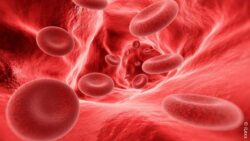
iLexx
Noninvasive technology tests for malaria without a blood sample
10.08.2023
Yale researchers and CytoAstra develop cytophone, a laser-ultrasound platform for noninvasive malaria detection. Funding from Gates Foundation supports prototype development and testing in Burkina Faso. Improved sensitivity offers promising diagnosis and treatment potential, bypassing emerging antigen test challenges.
Eijiro Miyako from JAIST
Cancer photoimmunotherapy: novel liquid metal nanoparticles
09.08.2023
JAIST develops PEG-IMIQ-LM nanoparticles uniting photothermal and immunotherapy - for real-time, immune-boosted cancer treatment.
iLexx
Materials for AI: more brainpower for hardware and software
08.08.2023
Backed by €1 million from VW Foundation, researchers develop neuromorphic materials to boost adaptive algorithms for autonomous driving.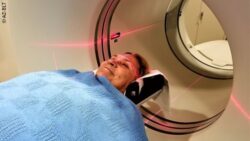
AZ-BLT
New imaging technology for a quick look inside a human being
03.08.2023
Physicists at the University of Würzburg have developed a new imaging method for humans that works without radiation or radioactive markers.
seventyfourimages
Brain-Computer-Interface: Focus on diamond-based quantum sensors
28.07.2023
In the NeuroQ project, a consortium from research and industry wants to develop sensitive sensors that enable better control of neural exoskeletons and prostheses under everyday conditions. Dr. Jan Jeske from the Fraunhofer Institute for Applied Solid State Physics IAF told us what role artificial diamonds play in this.
ellinnur
Biomaterials: toolbox for the development of bioadhesives
27.07.2023
Prof. Scheibel’s team at Uni Bayreuth reviews latest research on protein-based bioadhesives.
Patrick Mansell/Penn State
Grant to facilitate high-speed bioprinting
26.07.2023
Penn State researchers lead a project to develop tech for scalable bioprinting of native human tissues like bones, tracheas and organs.
UBT / Chr. Wißler
Digital AI system for tailoring polymers
25.07.2023
Prof. Kuenneth’s team builds digital system to rapidly identify ideal polymers from 100M+ options - boosting tech, eco, and economic gains.
University of Stuttgart, FSM-Labor
Intelligent rubber materials
20.07.2023
Stuttgart and Tübingen researchers develop autonomously switchable polymers for advanced material applications.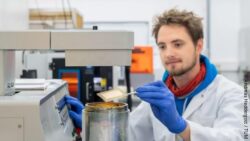
Andreas Heddergott / TUM
Electrodes: 4D printing for nerve stimulation
18.07.2023
Specific nerves may be stimulated artificially, for example to treat pain. The finer the nerves, the more difficult it is to attach the required electrodes. Researchers have now developed flexible electrodes produced with 4D printing technology. On contact with moisture, they automatically fold and wrap themselves around thin nerves.
KIMM
3D bioprinting technology to be used for removing cancer cells
13.07.2023
KIMM develops the world’s first 3D bioprinting technology that enhances the function of NK immune cells. The new technology is expected to improve effectiveness of cancer treatment.
Joseph Puthussery
Biosensing: air monitor can detect COVID-19 variants
12.07.2023
Scientists are looking at ways to surveil indoor environments in real time for viruses. By combining recent advances in aerosol sampling technology and an ultrasensitive biosensing technique, researchers at Washington University in St. Louis have created a real-time monitor that can detect any of the SARS-CoV-2 virus variants in a room in about 5 minutes.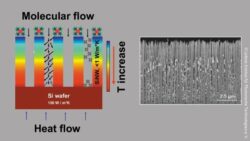
Leibniz Institute of Photonic Technology
Functional surface refinement: control of growth dynamics of finest tin layers
11.07.2023
Nanometer-scale coatings with functional materials play an important role in many sensory, electronic and photonic applications. An international team of researchers – coordinated by Leibniz IPHT in Jena, Germany – has succeeded for the first time in observing novel growth effects of tin coatings on silicon nanometer-structured surfaces.
StreetOncamara_From_Twenty20
NOVA project: next generation of antimicrobial coating technologies
06.07.2023
Researchers develop and test highly efficient, environmentally friendly and stable antimicrobial (antibacterial, antiviral, antifungal) coating technologies in the NOVA project.
Leibniz-Institut für Polymerforschung Dresden/NATURE
Bionics: What makes cholesterol-containing surfaces so repulsive?
04.07.2023
Living organisms use powerful physical principles to control interactions at their surfaces. Researchers at the Leibniz Institute of Polymer Research Dresden, Leipzig University and TU Dresden have now discovered why cholesterol-containing surfaces can exhibit greatly reduced attachment of proteins and bacteria.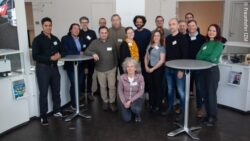
Fraunhofer IZM
Pregnancy: intelligent patch for remote monitoring
29.06.2023
A patch equipped with highly sensitive electronics is meant to collect and evaluate vital data. In addition, the sensors will be integrated into baby clothing in order to improve the future of medical monitoring for newborns with the highest level of data security.
Alex Dolce, Florida Atlantic University
U.S. patent for portable tool to diagnose and monitor sickle cell disease
28.06.2023
In the United States, sickle cell disease affects about 100,000 people and about 2 million Americans carry this genetic mutation. The most common and serious problems caused by sickle cell disease are anemia, pain and organ failure – stroke affects about 10 out of 100 children who have this disease. The national median life expectancy for people who have sickle cell disease can reach up to age 50.
Fraunhofer IAF
Materials science: fast magnetic imaging with diamond-based quantum sensor technology
27.06.2023
Microscopic imaging of magnetic fields, enabled by quantum sensing, allows the measurement of the unique magnetic fingerprint of objects. This opens the door for fundamentally new applications in various fields such as materials testing or biomedicine. The system offers a unique compromise of sensitivity, resolution and speed.
Empa
Sensor patch for abdominal surgery
22.06.2023
Researchers from Empa and ETH Zurich have developed a plaster with a sensor function to ensure that wounds in the abdomen remain tightly closed after an operation.
Fraunhofer IPMS
Micro scanners in medicine: flexible for customized applications
20.06.2023
The potential of micro scanners in medical technology is immense. Their small size, low weight and high energy efficiency make them ideal for mobile use. More than 200 different micro scanner designs have been developed at Fraunhofer IPMS to meet customer-specific requirements.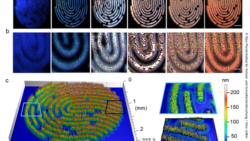
Max Planck Institute of Colloids and Interfaces / Dr Felix Loeffler
Product safety: anti-counterfeiting through laser printing
15.06.2023
A team of researchers at the Max Planck Institute of Colloids and Interfaces (MPICI) has developed a method that could make it more difficult to counterfeit products in the future. The new and patented method makes it possible to produce unique, non-copyable fluorescent patterns quickly, environmentally friendly and at low costs.
Empa
Antibiotics crisis: rapid test for sepsis with nanoparticles
13.06.2023
For Qun Ren, every minute counts. The Empa researcher and her team are currently developing a diagnostic procedure that can detect life-threatening blood poisoning caused by staphylococcus bacteria rapidly.
Fraunhofer IWU
Speech recognition for machine control
12.06.2023
Controlling a machine by giving specific spoken commands? Fraunhofer speech recognition software makes it possible.
MPI of Biochemistry
Optics: Ångström-resolution fluorescence microscopy
08.06.2023
A breakthrough in fluorescence microscopy has been achieved by the research group of Ralf Jungmann at the Max Planck Institute of Biochemistry (MPIB) and Ludwig-Maximilians-Universität (LMU) Munich.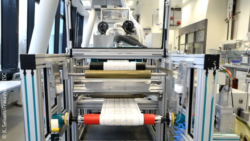
K. Selsam/Fraunhofer ISC
CircEl-Paper: Recyclable paper-based electronics
06.06.2023
Billions of tons of electronic waste are produced in the EU every year. With a novel approach, the new EU project "CircEl-Paper" could sustainably improve the recycling process for electronics in the future.
Fotogenia - Renate Trummer
Tissue Engineering: TU Graz revolutionises production of biocompatible microfibres
01.06.2023
Using a newly developed method for the efficient and cost-effective production of biocompatible microfibres, the production of autologous skin and organs can be significantly accelerated.
Jens Meyer/Uni Jena
Specially coated titanium reduces risk of clots on prostheses
25.05.2023
An international research team led by the german University of Jena has now developed a promising approach to significantly reducing blood clotting on the heart valve material titanium.
Fraunhofer IZM
World's smallest impedance spectroscopy system in form of a pill
23.05.2023
Imagine a scenario where you simply just throw in a pill to identify an error—this is now one step closer to reality thanks to the work done by researchers at Fraunhofer IZM in cooperation with Micro Systems Technologies (MST) and Sensry GmbH. As small as a piece of candy, the waterproof IoT sensor can reliably measure the properties of liquids even in hard-to-reach places.
astakhovyaroslav
SEMECO revolutionizes the medical electronics industry
18.05.2023
The project partners in the BMBF's SEMECO future cluster are convinced that the future of medical technology lies in the combination of digital innovation, safety and improved approval processes.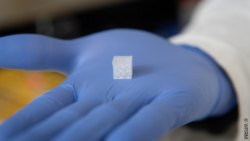
WFIRM
Bioprinting research makes history when it soars to the ISS
17.05.2023
The Wake Forest Institute for Regenerative Medicine (WFIRM) will make history this month when the first bioprinted solid tissue constructs soar to the International Space Station (ISS) on board the next all private astronaut mission by commercial space leader Axiom Space.
Julia Siekmann, Uni Kiel
New sensors for healthier indoor air
16.05.2023
People spend an average of 22 hours a day indoors, where furniture, carpets or wall paints can release harmful solvents over time. The scientists in the international doctoral programme "SENNET" aim to detect such pollutants. They want to develop reliable sensors based on special, porous materials.
UBT / Chr. Wißler.
Regenerative medicine: cell-specific properties of novel spider silk materials
11.05.2023
Materials made of spider silk can be specifically modified or processed in such a way that living cells of a certain type adhere to them, grow and proliferate. This has been discovered by researchers at the University of Bayreuth under the direction of Prof. Dr. Thomas Scheibel.
Lunghammer - TU Graz
Smart artificial skin in application check stage
09.05.2023
The smart skin developed by Anna Maria Coclite has many potential applications – from robotics and cosmetic surgery to prosthetics. With an ERC Proof of Concept Grant, the researcher is now exploring its possible practical applications.
TU Bergakademie Freiberg / D. Müller
Iron oxide nanoparticles for medical applications
04.05.2023
How to further improve the special magnetic properties of nanoparticles by microstructure design has been investigated by a team at TU Bergakademie Freiberg using analytical high-resolution transmission electron microscopy.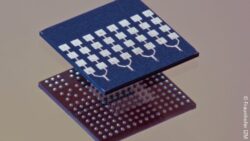
Fraunhofer IZM
6G is right around the corner
03.05.2023
6G aims to enable 1,000 GB/s data rates and ultra-low latency, meeting rising demands from telemedicine, autonomous driving and daily life.
Fraunhofer IAP
SmartID – Detect product piracy quickly
27.04.2023
In the SmartID project, scientists at Fraunhofer are developing a counterfeit-proof barcode system for authenticity verification simply by using a smartphone without accessing a database.
Fraunhofer IAP
Smart materials for aligner therapy
25.04.2023
Clinically effective, custom-made, discreet and comfortable - the demands on aligners for the therapy of malocclusions are high. This also applies to the material of these orthodontic splints. A team has now developed a highly innovative material that enables completely new treatment concepts and reduces costs. The scientists focused on polymers with shape memory properties.
Max Planck Institute for Molecular Biomedicine
Microelectrode array: hammock for brain organoids
20.04.2023
Novel microelectrode array system enables long-term cultivation and electrophysiological analyses of brain organoids.
SIAT
Capsule X-ray dosimeter for real-time radiotherapy monitoring
19.04.2023
In radiotherapy, precision in targeting tumor tissue while minimizing damage to healthy tissue is crucial. Monitoring the dose of radiation delivered and absorbed in real-time, particularly in the gastrointestinal tract, poses significant difficulty.
DECHEMA e.V.
Recovery of battery metals - project launch of Metallico
18.04.2023
How can battery metals such as lithium, cobalt, copper, manganese and nickel be recycled in a sustainable way? This question is in the focus of the new EU project METALLICO, in which DECHEMA is also involved. 23 partners from nine countries will optimize five innovative processes for the recovery of those metals and subsequently demonstrate these in case studies on an industrially relevant scale.
Gerd Altmann / Pixabay
Using AI to design innovative materials
11.04.2023
Advanced materials become increasingly complex due to the high requirements they have to fulfill regarding sustainability and applicability. Dierk Raabe and colleagues reviewed the use of artificial intelligence in materials science and the untapped spaces it opens if combined with physics-based simulations.
envato
Artificial intelligence in medicine: "There are many ways to make mistakes"
06.04.2023
It assists many physicians and is designed to make their lives easier: Artificial intelligence (AI) has seen an increased use and widespread adoption in healthcare settings. As such, it helps analyze X-ray and CT images or supports chronic disease management, for example. But how trustworthy is AI software?
ONWARD Medical NV
Kick-off: Marie Skłodowska-Curie Doctoral Network "ReWIRE"
06.04.2023
Through ReWIRE, next-generation scientists will be trained to develop translational breakthrough therapeutic solutions for patients with paralysis caused by traumatic spinal cord injuries.
Anna Maria Reuss (USZ) & Fabian Voigt (UZH)
Scallop eyes as inspiration for new microscope objectives
04.04.2023
Neuroscientists at the University of Zurich have developed innovative objectives for light microscopy by using mirrors to produce images. Their design finds correspondence in mirror telescopes used in astronomy on the one hand and the eyes of scallops on the other.
MPI-IS
Sustainability for biodegradable artificial muscles
28.03.2023
Scientists at the Max Planck Institute for Intelligent Systems, at Johannes Kepler University and at University of Colorado Boulder developed fully biodegradable, high-performance artificial muscles. Their research project marks another step towards green technology becoming a lasting trend in the field of soft robotics.
XING Ruirui
Researchers develop biodegradable, biorecyclable glass
22.03.2023
A research group led by Prof. YAN Xuehai from the Institute of Process Engineering (IPE) of the Chinese Academy of Sciences has developed a family of eco-friendly glass of biological origin fabricated from biologically derived amino acids or peptides.
Messe Düsseldorf / ctillmann
Decentralization of diagnostics
22.03.2023
The coronavirus pandemic has given point-of-care diagnostics a boost. But where is the diagnostic journey heading?
Fraunhofer IPK / Larissa Klassen
New technologies for producing mRNA-based pharmaceuticals
21.03.2023
mRNA-based vaccines have been one of the key elements in the fight against the coronavirus. The technology was originally developed for cancer therapy and can be used to treat many diseases. Together with partners, Fraunhofer IPK is now researching how mRNA therapeutics and other medication can be better produced and more effectively applied.
Christin Scholz / Fraunhofer IVI
Establishing design as integral component
16.03.2023
Fraunhofer Institutes and TU Dresden launch the DesignLab to strengthen the role of design in applied research disciplines.
DITF
Carbon fibers based on wood
14.03.2023
The DITF have developed a sustainable and cost-saving process to produce carbon fibers from lignin. This is an inexpensive raw material that is available in large quantities and is a waste product in paper production. The process offers high energy-saving potential and is particularly environmentally friendly. It uses natural, renewable raw materials and does not require solvents.
Satoshi Tanikawa, et al. 2023
Healing the brain: hydrogels enable neuronal tissue growth
08.03.2023
Synthetic hydrogels were shown to provide an effective scaffold for neuronal tissue growth in areas of brain damage, providing a possible approach for brain tissue reconstruction.
claudioventrella
Nanoparticle-based deep brain stimulation can treat Parkinson's disease
07.03.2023
With the onset of an aging population, the annual incidence of neurodegenerative conditions such as Parkinson's disease is escalating rapidly. One of the various therapeutic approaches for such diseases is deep brain stimulation. Recently, a research team at POSTECH developed a new technique for administering electrical stimulation to the brain without the need for implanted electrodes.
FBH/P. Immerz
Speeding up diagnostics! Entangled photon pairs to help fighting cancer
01.03.2023
Cancer is the second leading cause of death and the most feared disease in aging Western societies, representing the greatest challenge to modern medicine. Since cancer cannot be prevented, early and differentiated detection is extremely important for rapid intervention and cure.
Georgia Tech
New ultrafast water disinfection method more environmentally friendly
23.02.2023
Having safe drinking water is vital for public health, but traditional methods of disinfection cause their own environmental problems. Chlorine is cheap and easy to use in centralized water systems, but at the expense of harmful chemical byproducts.
Swen Reichhold
AI: new method for targeted design of molecules
22.02.2023
Leipzig and Warwick scientists create method for targeted design of molecules with desired properties.
Fraunhofer IWM
Creating 3D objects with sound
15.02.2023
Scientists from the Micro, Nano and Molecular Systems Lab at the Max Planck Institute for Medical Research and the Institute for Molecular Systems Engineering and Advanced Materials at Heidelberg University have created a new technology to assemble matter in 3D. Their concept uses multiple acoustic holograms to generate pressure fields.
Laura Schirrmeister
Degradation of plastic waste using newly developed biocatalysts
14.02.2023
The plastic materials polyurethane and polyvinyl alcohol can now be degraded under mild conditions with the help of enzymes as biocatalysts. Scientists from the University of Greifswald have developed corresponding methods together with the German company Covestro and teams from Leipzig and Dublin, as recently published in Angew. Chem. Int. Ed., in two separate articles.
Sato et al
Navigating complex biological systems with smart fibers
09.02.2023
Instrumenting integrative actuators and sensors within a single active device at the microscale is constrained by current manufacturing technologies. Now, a team of researchers has developed a flexible polymer-based actuatable fiber which is capable of being integrated with smart materials and biosensing composite materials.
Fraunhofer ISC
Bioresorbable membrane for healing internal and external wounds
08.02.2023
Fraunhofer researchers have succeeded in using the bioresorbable silica gel Renacer® to produce an electrospun membrane that is neither cytotoxic to cells nor genotoxic. This model mimics fibrous structures found in connective tissue and is therefore particularly suitable for regenerative applications, such as for improved wound healing.
phwt
Wound dressing with sensor monitors healing process
06.02.2023
Is the wound healing or is it infected? A new wound dressing is expected to bring the answer through technology.
Fraunhofer IMWS
Tropoelastin: The quest for innovative materials for wound care treatment and management
06.02.2023
In a joint research project that ended at the end of 2021, the Fraunhofer Institute for Microstructure of Materials and Systems, the Martin Luther University Halle-Wittenberg, and Skinomics GmbH examined whether a structural protein is suitable as a wound dressing material.
AG Klinische Neurotechnologie, Charité – Universitätsmedizin Berlin
Controlling neural exoskeletons more precisely with diamond sensors
01.02.2023
Brain-computer interfaces are able to restore some mobility to paralyzed people by controlling exoskeletons. However, more complex control signals cannot yet be read from the head surface because conventional sensors are not sensitive enough. A collaboration of Fraunhofer IAF, Charité – Universitätsmedizin Berlin, University of Stuttgart and other industrial partners has taken up this challenge.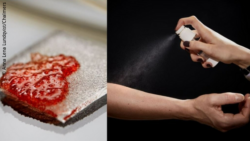
Anna Lena Lundqvist/Chalmers
New spray fights infections and antibiotic resistance
31.01.2023
Chalmers researchers developed a spray that kills antibiotic-resistant bacteria, usable for wound care, implants, and medical devices.
Kelby Hochreither/Penn State
Novel microneedle bandage could save lives
26.01.2023
Secondary, uncontrolled bleeding from traumatic injury is the leading cause of death of Americans from ages one to 46. Amir Sheikhi, assistant professor of chemical engineering and of biomedical engineering at Penn State, has a plan to change that with a novel microneedle patch that can immediately stop bleeding after injury.